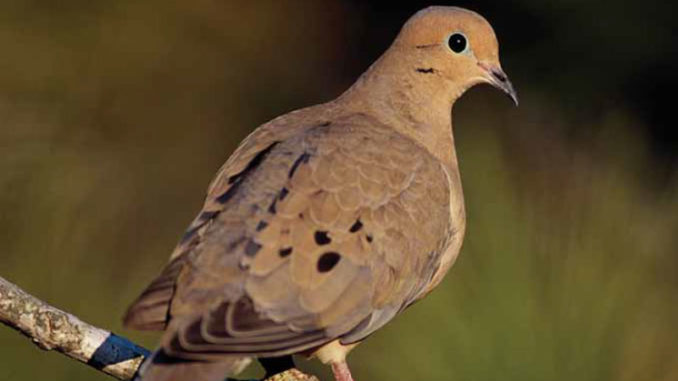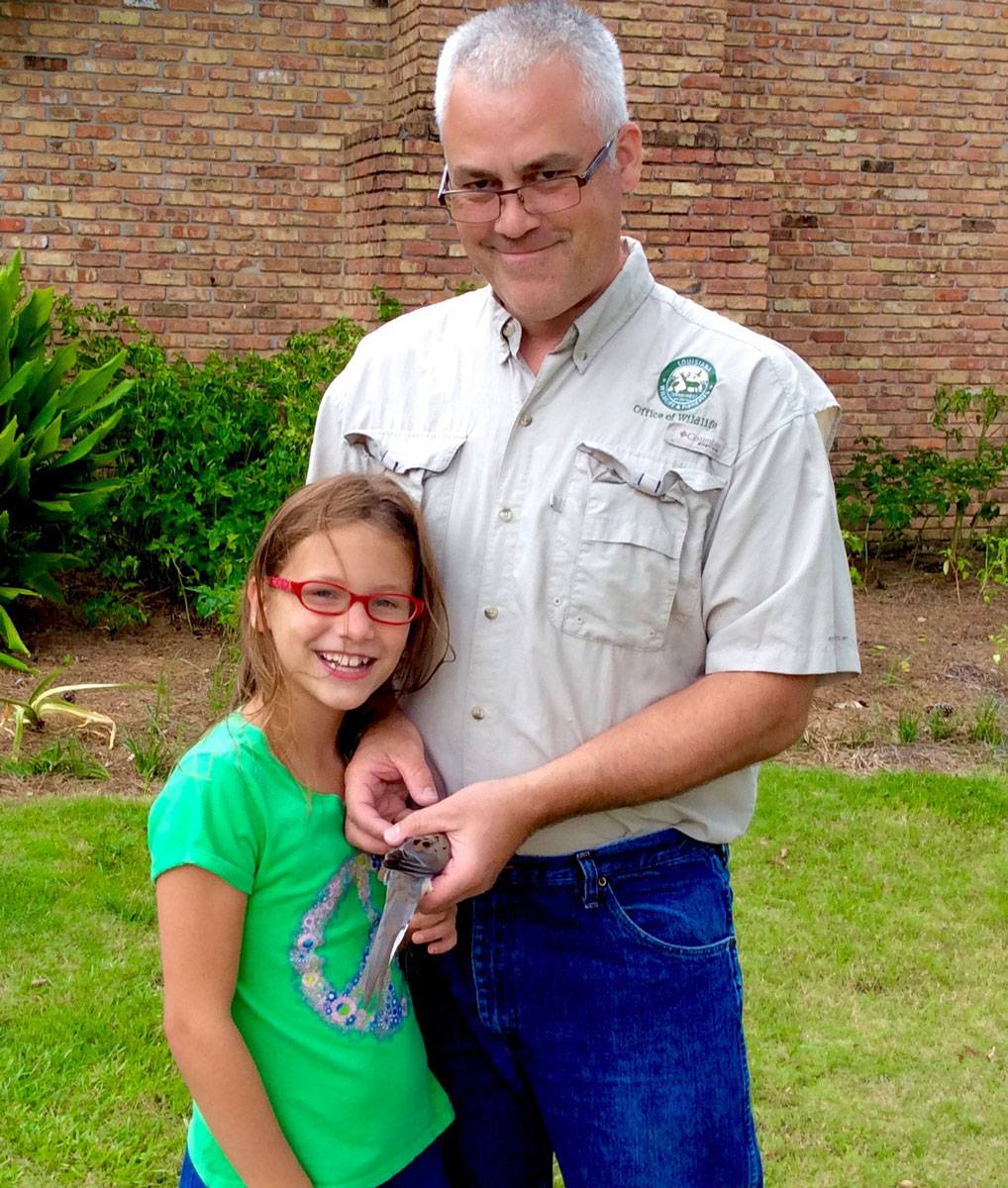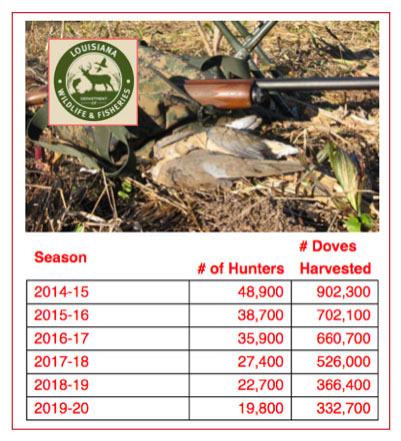
Season starts September 5
Louisiana’s dove season opens in both the North and South Zones on Saturday, Sept. 5, and while most hunters never take advantage of it, the season in both zones actually runs into late January, 2021.
It’s too early to make a good guess as to whether this looks like it might be a poor, fair, good or great season because dove estimates and surveys are difficult to take. But banding efforts indicate a lot of birds in the state.
“We don’t do population surveys of mourning doves in Louisiana, so it is always difficult to predict how many doves will be around,” said LDWF Research and Survey Program Manager Jeffrey P. Duguay, Ph.D. “However, we have a dove banding program where we band roughly 1,500 doves in the state annually. Based on our banding efforts, it looks like there are good numbers of doves across the state for this coming season.”

The banding program is a national effort, Duguay said. Age specific (adult birds; hatch year birds) harvest and survival rates are determined from the banding data. From this band recovery models are used to estimate annual survival. This information is used in a model (along with data from the harvest survey where hunters turn in dove wings) to estimate population abundance. Harvest survey data from wings provides an index of recruitment — we can age doves based on wing feather patterns and can then (using models) determine annual recruitment.
Resident birds
One interesting fact about dove season is that even though doves are considered “migratory birds,” that isn’t always the case here.
“Most of the early season doves harvested in Louisiana are resident birds,” Duguay said. “We have lots of birds that spend most or all of their lives in Louisiana. They are hatched here and remain year round. Some do migrate though. Our dove banding efforts provide us good information on dove movements. We’ve banded doves that were recovered in the same general location (within 25 miles or less) 3 or more years later. We know that these particular birds have survived several years. Whether they remained in the same general location all this time or moved considerable distances is not known though. We’ve also banded doves that have been recovered in other states including Iowa, Texas, Oklahoma, Mississippi, Illinois, Missouri, Florida, Nebraska as well as Mexico.”
Rainfall is probably the biggest factor affecting early dove season. Too much or too little rain can impact crops planted to attract or concentrate doves for hunting. That also affects migratory birds as well as resident birds.
“Based on band return data, it appears as though migrating birds begin to arrive in Louisiana in September and increase in numbers through October,” Duguay said. Despite the fact there may be more doves later in the year, dove season traditionally puts more hunters in the field for opening weekend than any other time.
HIP reporting
One thing that isn’t hard to figure out when it comes to Louisiana dove hunters and harvests is that numbers of both are on a steady decline.

In the 2014-15 season, LDWF estimated that 48,900 hunters targeted doves with harvest numbers around 902,300. By last season, those numbers had dwindled by more than 50% to 19,800 hunters with a harvest of 332,700. Some of that could be due to lack of proper reporting, but it is hard to tell.
New Harvest Information Program (HIP) reporting that does not go through retail outlets selling licenses should help wildlife experts determine more accurately how real those numbers are. All migratory bird hunters, including dove hunters, need to be sure to get their HIP certification. This year, the HIP certification can only be obtained online at https://la-web.s3licensing.com/ or at LDWF Baton Rouge headquarters only.
The splits
The North Zone splits are Sept. 5 – 27, Oct. 10 – Nov. 15 and Dec 26 – Jan. 24. Dove hunters in the North zone should take note: The state’s hunting pamphlet has a printing error showing that the north zone third split runs from December 26-Jan. 2. It should read December 26-January 24. The South Zone splits are Sept. 5 – 16, Oct. 17 – Nov. 29 and Dec 19-Jan. 21.
“The structure for setting the season dates is the same this year as in the past,” Duguay said. “However, in the south zone this year there were a few days added to the first split and second spilt. The south zone now ends Thanksgiving weekend. A few days were removed from earlier October and late January in the south zone to accommodate for this change.”
Daily limit on doves is 15 in aggregate, either mourning, white-winged, fully dressed Eurasian and collard doves. The possession limit is 35 in aggregate.